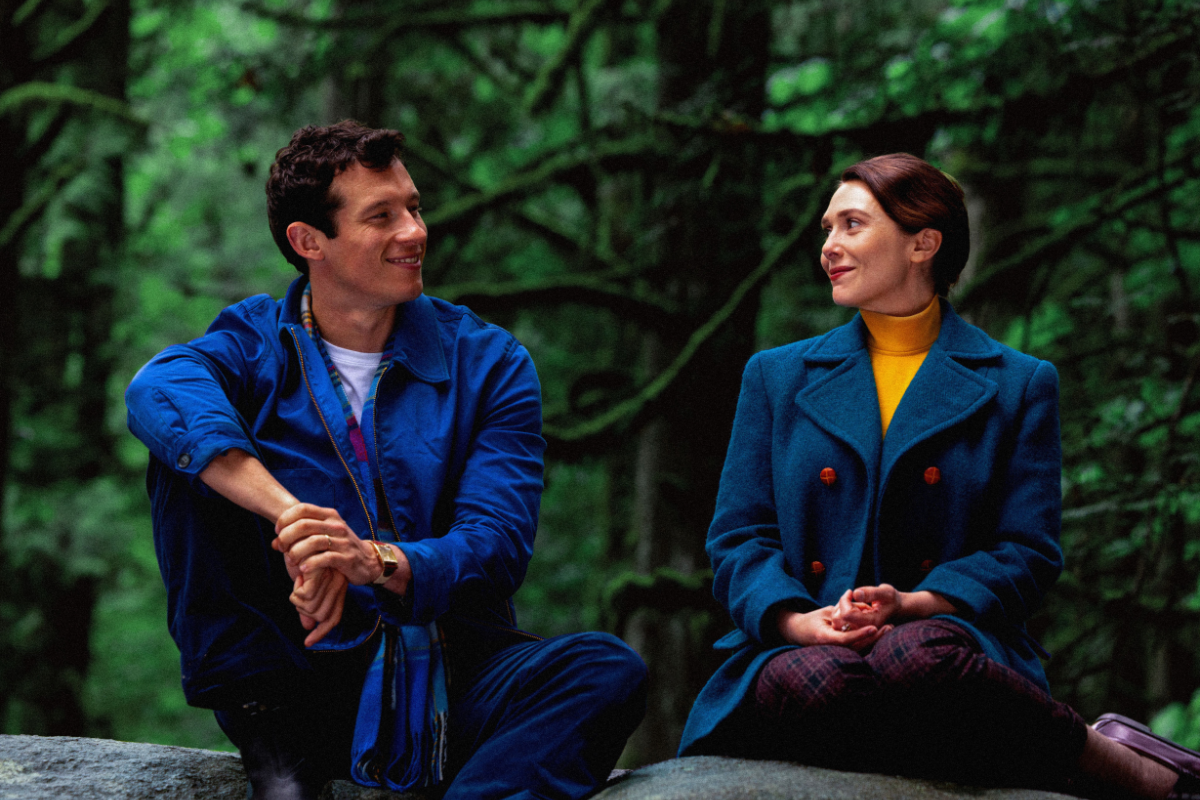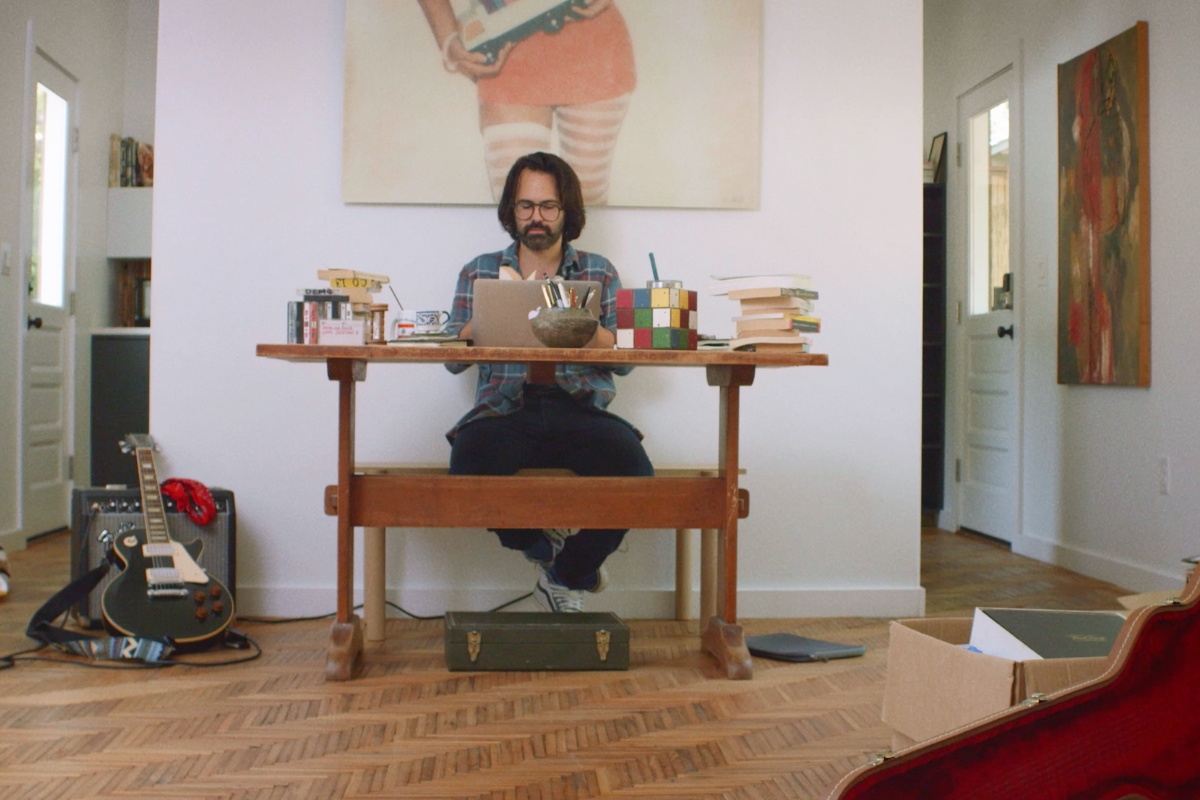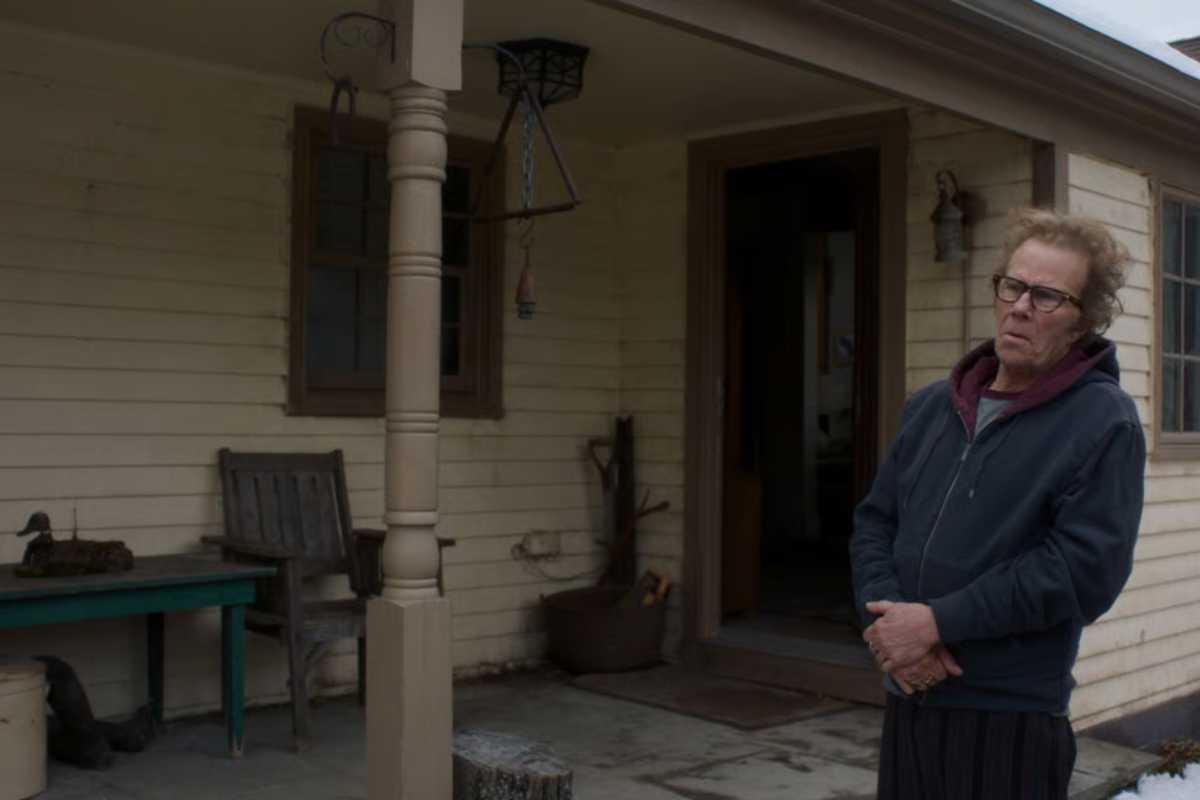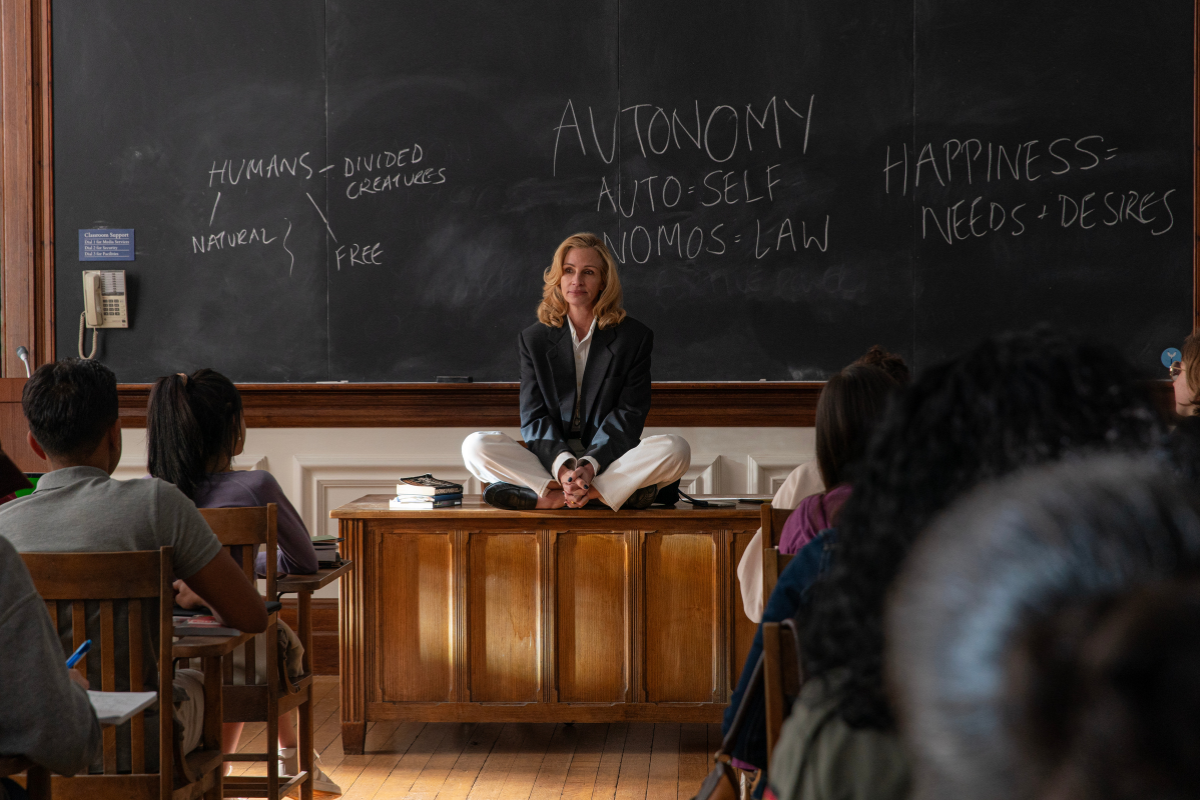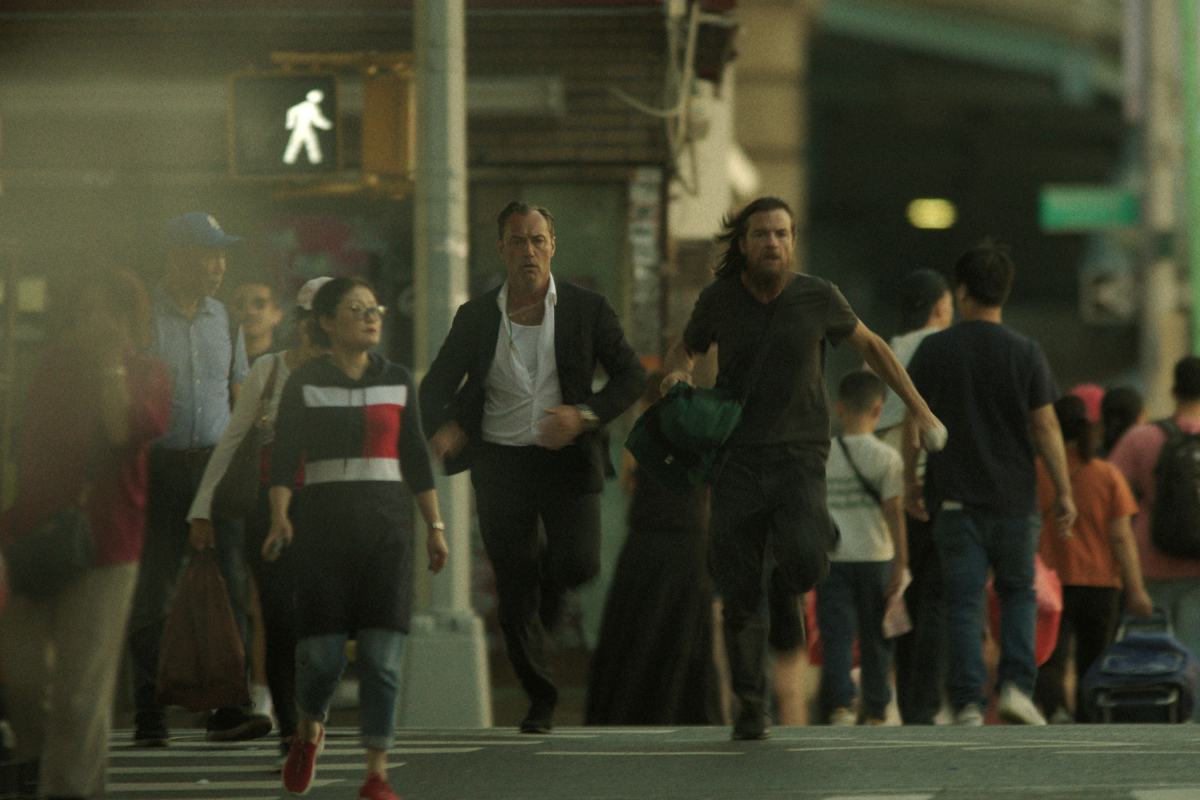2024 Telluride Film Festival Report – Last Day and Conclusions
On the last day I managed to see wonderful films to round out the Show with three completely different types of films. Disparate narrative films Saturday Night and September 5 along with a fascinating doc on cinema’s technical history Her Name Was Moviola. Walking to the rental condo that night I began thinking about the whole experience and what it all may mean.
Wrapping up the Telluride Film Festival on the last day is always bittersweet. On one hand, you’ll miss the pattern of waking every day and seeing a number of really great films. On the other, I can’t wait to get back home and tell everyone what marvelous films will soon be coming to screens we can all watch. For me, the Telluride Monday is a memorable wind-down and reflection while stuffing as many more gems in the goodie bag before they turn off the lights.
On the last day I managed to see wonderful films to round out the Show with three completely different types of films. Disparate narrative films Saturday Night and September 5 along with a fascinating doc on cinema’s technical history Her Name Was Moviola. Walking to the rental condo that night I began thinking about the whole experience and what it all may mean.
Saturday Night
It may seem odd to spend a Monday morning watching Saturday Night but I’m glad I did. I’d suggest you see this film regardless of the time of day or day of the week.
When the hyper-talented filmmaker Jason Reitman wants to make a ribald homage to a beloved television institution and to be true to the feeling of the time period shoot it on 16mm and did I mention it’s a portrayal of the hectic ninety minutes prior to the first live broadcast of what became the groundbreaking Saturday Night Live TV show – don’t worry, it’s in perfect hands.
You can tell Reitman truly honors and respects his subject matter. He and his co-writer Gil Kenan meticulously interviewed nearly every living person there on that historic day and compiled a blended story that captured the truth and spirit of what it was like in that snake-bit, chaotic tornado that somehow stepped back from the edge of oblivion and landed on both feet in television history.
Reitman’s deft hand plants what unbelievably really happened (lighting crew quitting, crashed lamps causing fire,) with nods to future world-famous skits to come seamlessly. A great cast of actors play recognizable and believable impressions of the iconic comics without coming off as mimics. Join that with a marvelous soundtrack including the score created on set by Jon Batiste (who did double duty and also cast as the first musical guest, Billie Preston) and the frenetic fluidly moving camera piloted by Eric Steelberg marvelously woven into a complex, fascinating tapestry.
I admit I will probably be watching this one many more times to relive the nostalgia and to try to catch all the references and jokes I’d missed. This one’s easily a top ten of the year and a darn good time.
September 5
The next film I approached with anticipation and a bit of trepidation. I remember the tragic event it’s based upon. I know that some of those who remember it may not want to relive the trauma. It was truly a world-first, worldwide experience. A dramatization of such a momentous historic event would have to be really well done to do justice to the reality of it. I think they pulled it off.
Writer/director Tim Fehlbaum set out on a dramatic retelling of the behind-the-scenes turmoil of the ABC Sports broadcasting team covering the sudden hostage crisis of the 1972 Olympics. Nostalgia is the wrong word. It might be triggering for some. But Fehlbaum pulls off a well-constructed, perfectly paced, and performed depiction resulting in a riveting film that handles the emotional touch points with delicacy without shying away from them.
I began my career in live broadcast television just ten years after the event so the sights and sounds of the control room, editorial and engineering rooms were palpably familiar and real to me. Even dealing with a well-known historical event, Fehlbaum manages to keep the tension on the “what’s next” pulse going at full blast. The end result is a respectful piece of cinema, well worth watching for many reasons.
Her Name Was Moviola
To wind down the fest I chose to step back in history to reminisce with a giant in the field reflecting on an old friend of his. This one may seem like an “inside the ballpark” documentary, of interest to only a slice of the technical or historically inclined, but, there is more beneath the surface that gets revealed.
Walter Murch, a legendary film editor extraordinaire, wanted to pay respects to a lady that held his hand in the early days, gave him gifts he used to form a celebrated career, but sadly, is no longer with us. Murch’s doggedly determined film crew searched high and wide to find the last remaining pieces of a full Moviola edit suite. The Very. Last. Pieces.
They did this in order to briefly revisit the halcyon days when he and his former assistant film editor Dan Farrell were steeped in the inner workings of the highly manual and magical process of editing on the device. Because the Moviola is the center of an integrated system required to perform the task, the hardest part of going back was finding the other pieces, if they existed at all, to make it all work. Turns out, those pieces were almost extinct. In several categories, like finding enough rolls of number tape or reels of magnetic film sound, scraped the very bottom of the barrel of resources. With no more resources left, this will likely be the very last Moviola edit.
Having cobbled together the last precious bits, the documentary then turns to the actual task of editing. For source material, Mike Leigh graciously lent the digital reels of his film Mr. Turner. This required the digital transfer to film stock for both the visual and sound in order to even start. This brought home just how far our current industry practices have traveled from the heyday of the Moviola’s reign.
Then began the fun part. Here the documentary director, Howard Berry, does a modern production miracle, without interference, we get an intimate exposure of the complete process. It feels as if you are in the tiny, noisy room with these two professionals, dancing between themselves, wordlessly moving and throwing switches and turning gears. In fascinating technical detail we watch as Murch and his old assistant re-find the muscle memory and the joys of editing on their beloved machine.
Their skill shines. You can see in their eyes as they discuss the experience afterward that they were surprised and pleased in equal measure. They admitted they’d forgotten a lot of what they had done by instinct, but, returned to them effortlessly. They discussed the abilities of what they could do with the old film processes that aren’t the same in the modern digital world. They also acknowledged that the digital environment has benefits that the film world lacked.
All in all, a wonderful experience to watch unfold, revealing that the art of editing exists outside of the technology used to produce it. And when you have talent at the wheel, they can take you places you’ll be amazed to discover.
Conclusions and Musings on the Future
With that, my Telluride Film Festival experience concluded. The films will go on following paths to fame and glory (I would say fortune, but, we should be realistic,) while the fate of what will become of the film festival given the observations of this year is still to be determined.
The long lines and shut outs continued even through Monday. I talked to many people all weekend and nearly everyone noticed the issue and adjusted or accepted it. (Ironically, one exception who never got shut out is my wife. Go figure.) I also was able to confirm my suspicion that there were significantly fewer volunteers and staff than there were last year. Part of that could be due to the increasing difficulties of finding housing for them. But having less staff often means when things go awry there are less available options to handle things. That said, the quality level of the volunteers and staff I encountered this weekend were once again stellar and top-notch.
The other issue of problems with the logistics of the schedule this year seemed to come from having forgotten the hard-learned lessons from years of previous attempts. Years ago it was revealed that starting all films at roughly the same time at all venues has huge detriments in the flow of an actual event. Whenever there’s an interruption, like being shut out, you fall out of step for hours before you can get back in the flow of the next available opportunity. Once they staggered the start times at each venue it allowed film fans to shift through opportunities with much more flexibility and less idle time. I don’t know for sure, but, I think someone new was devising the schedule this year. I hope they learn from the results they got and make adjustments.
The last portent I pondered has implications for the next year and beyond. It involves the Festival’s Nugget Project, a real estate investment and revitalization of a building in Telluride to provide a permanent home for the Festival’s year-round endeavors and an expanded connection to the town. This laudable goal has been in the works for years and this year they’ve broken ground on the renovations that will, if it remains on schedule, take until 2026 to complete. I very much want the project to succeed. So I have paid attention to what the Festival has said (and not said) while the process moves through its phases.
From my own experiences advising clients on their own planned industry-oriented infrastructure projects have given me insight into how these things often go, where the surprising pitfalls lie, and where film folk often get blindsided by the realities where real estate and municipality involvement differ from the traditional business expectations of the film industry. I have seen many a worthwhile project falter and fail. Planning contingencies is pivotal to avoid hitting a brick wall when you can least afford it.
The biggest concern to have a contingency for is what to do if the schedule and costs shift out of the current expectations. I would hope that the Festival has alternatives at least in mind if they see that they don’t have the outcomes in the timelines they are counting on. And I’m worried. They knew this year they wouldn’t have the Nugget and it doesn’t look like, after this week’s results, that their planning for that accommodated properly. How are they going to adjust to the known absence again next year? And do they have thoughts on how to compensate if the project drags on past the deadlines? All ponders without connections to know the answers. But I hope the questions are being asked.
In any event, I will be on the ground next year, seeing how things turn out and enjoying the mountain air once again. Till next year...
Christopher Schiller is a NY transactional entertainment attorney who counts many independent filmmakers and writers among his diverse client base. He has an extensive personal history in production and screenwriting experience which benefits him in translating between “legalese” and the language of the creatives. The material he provides here is extremely general in application and therefore should never be taken as legal advice for a specific need. Always consult a knowledgeable attorney for your own legal issues. Because, legally speaking, it depends... always on the particular specifics in each case. Follow Chris on Twitter @chrisschiller or through his website.


